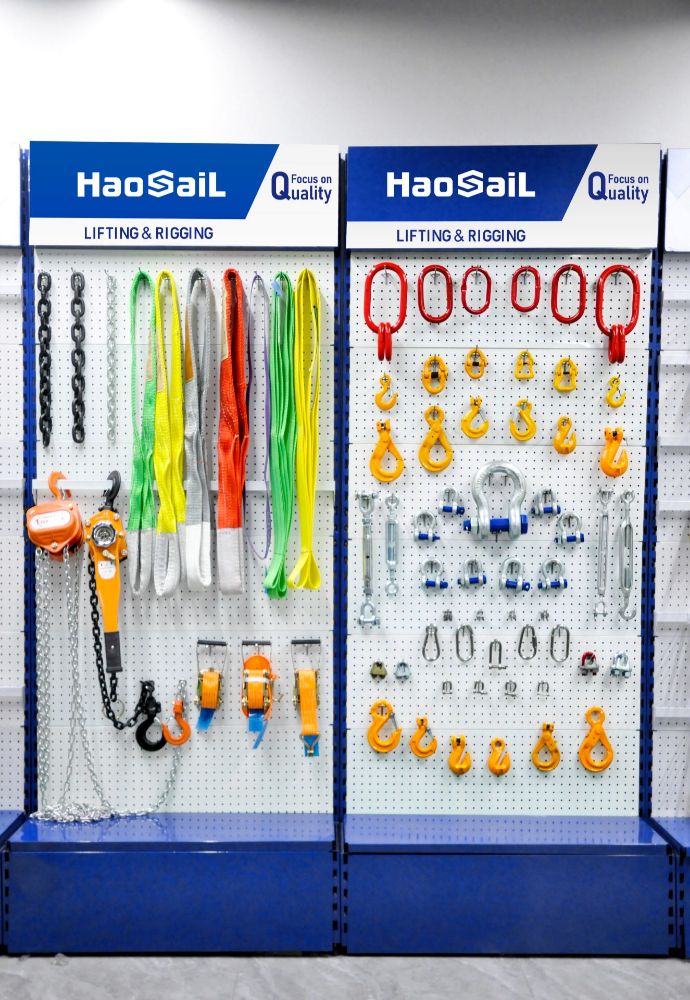Blog
The master link assembly is usually made of materials such as high-strength alloy steel or stainless steel to ensure its strength and corrosion resistance. The manufacturing process usually includes processes such as forging, machining and heat treatment to improve the mechanical properties and reliability of the small and main rings.
Application fields: master link assembly are widely used in various industrial and construction fields for connecting and fixing rigging, chains, wire ropes, hooks and other components. They are commonly used for hoisting, hoisting, securing and connecting heavy objects such as cranes, cranes, excavators and other equipment.
Precautions for safe use:
Make sure to select a master link assembly that meets codes and standards, and install and use it in accordance with the manufacturer's recommendations and guidelines.
Before use, check whether the appearance and structure of the master link assembly are intact and avoid using damaged or worn master link assembly .
Pay attention to the correct insertion and rotation of the master link assembly to ensure that the sub- and main-rings are tightened reliably and meet operating requirements.
During use, regularly check the status of the master link assembly, especially the threaded part for wear, deformation or other damage.
Follow correct lifting and hoisting procedures and strictly adhere to relevant safety standards and operating procedures.
A chain sling is a common hoisting and lifting tool that consists of multiple chain links. They are usually made of high-strength alloy steel chains with excellent load-bearing capacity and durability.
Structure and features: Chain slings consist of a series of chain links, each of which is connected by a connecting ring or connecting rod. Chain links usually have strong bolted or welded connections to ensure safety and security. Chain slings have the characteristics of high strength, adjustable length, wear resistance and corrosion resistance.
Materials and Manufacturing: Chain slings are typically made from alloy steel to ensure their strength and durability. The chain manufacturing process usually includes processes such as forging, heat treatment and surface treatment to improve its mechanical properties and corrosion resistance.
Types and Configurations: Chain slings come in a variety of types and configurations to suit different lifting needs. Common types include single-strand chains, multi-strand chains, double-leg chains, and multi-leg chains. Sling configurations can be customized to specific load requirements and usage environments, such as by selecting different lengths of chains and accessories such as hooks.
Application areas: Chain slings are widely used in industry, construction, shipping and other fields for hoisting and lifting heavy objects, such as steel, mechanical equipment, containers, etc. They are suitable for a variety of lifting scenarios, including equipment such as cranes, cranes, excavators and trucks.
Precautions for safe use:
Make sure to choose a chain sling that complies with codes and standards and is used according to the manufacturer's guidelines and recommendations.
Before use, check that the appearance and structure of the chain sling are intact and avoid using a sling that is damaged or worn.
Select the appropriate chain sling type and configuration based on load requirements and usage environment, and ensure proper installation and connection.
Regularly inspect the condition of chain slings, including links, links, and connecting rods for wear, deformation, or other damage.
Follow correct lifting and hoisting procedures and strictly adhere to relevant safety standards and operating procedures.
Zinc-nickel plating is the plating of Zinc and nickel on the surface of objects respectively to play the role of anti-corrosion, beautiful appearance and wear resistance.
- Better corrosion protection
Zinc-nickel plating can prevent surface corrosion, especially in a humid environment, zinc has good rust resistance, can resist the oxidation of the surface of the object, to prevent the surface of the object rust. The nickel layer of galvanized nickel can prevent the zinc layer from losing its anti-corrosion effect because of oxidation, so as to achieve better anti-corrosion effect.
- More beautiful surface
Zinc-nickel plating can improve the gloss of the surface of the object, make the surface of the object more smooth, and increase the beauty of the object. In many household goods, electrical appliances, etc., the application of galvanized nickel has been very extensive, because it can make items look more high-end and fashionable.
- Abrasion resistance
The zinc layer and nickel layer of zinc-nickel plating can make the surface of the object harder, thereby increasing the wear resistance of the object. In some mechanical equipment, automobiles, etc., galvanized nickel is also widely used, because it can increase the wear resistance of the surface of the object and improve the service life of the object.
- Electrolytic action
The zinc layer and nickel layer of zinc-nickel plating can form a battery and form a protective film on the surface of the object to prevent the surface of the object from losing its anti-corrosion effect because of oxidation. At the same time, this layer of protective film can also make the surface of the object harder and improve the wear resistance of the object.
- Environmental protection
The application of zinc-nickel plating can reduce environmental pollution because it can make the surface of the object more durable, reducing the number of times people need to replace because of the aging of the item, thus reducing environmental pollution. At the same time, the application of galvanized nickel can also reduce waste generation, thereby reducing environmental pollution.
_1000.jpeg)

- 2025
- 2024
- 2023
- 2022






